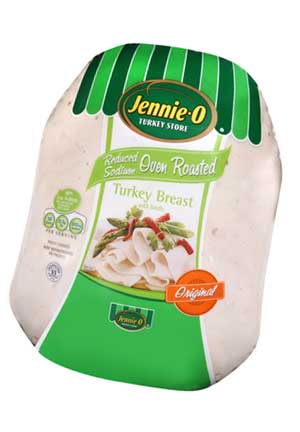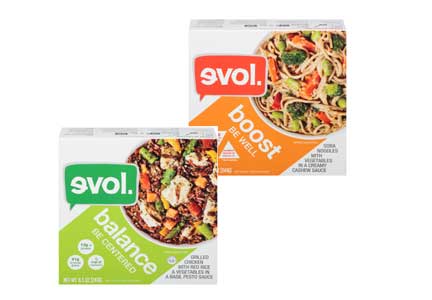While meat and poultry suppliers to the National School Lunch Program may feel some relief with the recently published final rule on the sodium content of meals served to about 30 million American children in more than 99,000 schools and institutions, this does not signal the end of the road for lowering sodium in food products. The fact remains that managing sodium intake is a priority for many households, and products with too high of levels, which is a subjective and often fluctuating number based on product, may deter purchase.
The Transparency Narrative, a new report from Chicago-based Label Insight, and the Food Marketing Institute, Arlington, Virginia, shows that grocery shoppers exhibit loyalty to those products that create deeper relationships through information exchange. This includes being upfront about the product’s sodium content.
The report shows that a low-sodium statement is the fourth most important label claim, with 38 percent of the 2,022 US adult shopper respondents saying its presence influences purchase decisions. The other more important claims are no preservatives (42 percent), high protein (39 percent) and no  added hormones (39 percent), with low sugar tied with low sodium.
added hormones (39 percent), with low sugar tied with low sodium.
While nearly four in 10 shoppers find a low-sodium claim appealing, its presence may actually deter other shoppers, as a reduction of sodium to some consumers translates to less flavor and thus less palatability. These sodium-conscious shoppers may compare Nutrition Facts labels. They are purchasing products with sodium contents that satisfy their opinion of what’s not too much.
The US Food and Drug Administration (FDA) has set the Daily Value (DV) – the reference amount of a nutrient to consume or not to exceed each day for adults and children 4 years of age and older – for sodium as less than 2,300 mg per day. The FDA encourages shoppers to use the percent DV in the Nutrition Facts as a tool to make healthier food choices. As a general guide, the FDA states that 5 percent DV or less of sodium per serving is considered low, while 20 percent DV or more of sodium per serving is considered high.
Most shoppers use this information at their discretion. There’s no magic number. It’s often personal and erratic and varies with product. With a snack, 10 percent DV may be acceptable. With prepared meals, they may be more flexible and 25 percent DV might be the sodium threshold. Nevertheless, processors are wise to do their best to keep sodium contents on the lower side of the spectrum in order to not have it be the purchase dealbreaker.
Appealing to shoppers
Sodium content awareness crosses all adult generations. A new report from FleishmanHillard, Chicago, shows when it comes to food and nutrition, there’s an emergence of shared beliefs and behaviors among Gen Z, millennials, Gen X and boomers. The sodium content of foods is something that all four generations take into consideration when making food choices, with sodium content becoming more important with age.
“We call these cross-generational influencers ‘Gen Food’ because food defines them and is an important part of their values and belief system,” says Jamie Greenheck, global managing director of FleishmanHillard’s food, agriculture and beverage practice. “They’re taking personal responsibility for improving the way we eat and drink, which provides a tremendous opportunity for brands looking to connect and drive action through food.”
This is apparent in the new generation of prepared meals sold in retail freezers, many of which feature meat or poultry as the primary protein component. While in-store foodservice and refrigerated prepared meals continue to thrive, shoppers are embracing frozen meals as a convenient, longer shelf life option, with many recent introductions speaking the same language as fresh. This includes clean label, nutrient-dense ingredients, ethnic and culinary inspiration and free-from claims.
One claim that most foodservice and fresh meat and poultry-centric meals cannot claim is low-sodium. In fact, many of these foods rely on sodium to assist with extending shelf life. Frozen foods, on the other hand, use sub-zero temperatures for preservation. These products are increasingly being formulated to contain lower amounts of sodium, often times flagging the sodium per serving on fronts of package. Meat and poultry suppliers to these  frozen meal manufacturers offer lower-sodium products to assist in the label claims.
frozen meal manufacturers offer lower-sodium products to assist in the label claims.
Convenience is a key driver for purchases of frozen foods and provides an ideal vehicle to keep meat and poultry center of plate. Twenty-six percent of total US grocery shoppers are shopping in the frozen foods department more frequently than last year. This is being led by millennials and households with children, according to research from Acosta, Jacksonville, Florida.
Another reason they are shopping the category is for less waste. Thirty-two percent of shoppers expect to purchase more in the frozen food aisle because they don’t spoil as quickly as fresh foods.
“Frozen food is certainly its own umbrella category, but its versatility allows it to span multiple mealtime occasions, which is why there has been a lot of room for growth and innovation across items and brands,” says Colin Stewart, senior vice president at Acosta. “Competition in the category is heating up as fast-paced millennials, who often take greater interest in the health benefits of food than older generations, look to frozen as a way to eat well in a convenient and hassle-free manner.”
For millennials, frozen foods are valuable as quick dinner solutions (89 percent); convenient lunches (72 percent); convenient breakfasts for kids (81 percent) and as side dishes (78 percent).
“Retailers and brands should keep in mind that a majority of consumers are looking for quick-and-easy options, while continuing to search for products that provide variety and health benefits to their households,” Stewart says. This includes managing sodium intake.
Sources of sodium
Most further-processed meat and poultry – those quick-and-easy options today’s shoppers seek out – contain some added sodium. This includes everything from ready-for-cooking seasoned pork loin to deli-style luncheon meats to the fully cooked ground beef used in frozen burrito bowls. To keep sodium content down, it is paramount that processors evaluate all the sources of sodium along with their functions, as many sodium-containing ingredients are necessary for the manufacture of delicious, visually appealing, safe and affordable products.
The primary source of sodium is salt chloride, or simply salt, which is used in brines, marinades and seasonings. Salt is included directly in batters and breadings, with the latter often based on chemically leavened bread crumbs, where the chemical leavening agent may be a source of sodium, e.g., sodium bicarbonate (baking soda). Curing agents, namely sodium nitrite, contribute to total sodium content, as do cure accelerators such as sodium ascorbate and sodium erythorbate. Common food safety ingredients based on acetates and lactates typically come as a sodium salt. Water-binding ingredients, specifically phosphates, can be significant sources of sodium, too. Other water binders and extenders, such as proteins and fibers, inherently contain some sodium and should also be considered in any sodium-reduction effort.
Cost is always a factor when attempting to reduce sodium content. Many sodium-containing ingredients tend to be mainstream, commodity-priced ingredients, while their replacements are often value-added ingredients that come with a higher price tag. In some instances, multiple ingredients may be necessary to replace the sodium that’s found in a meat or poultry product. This may not only increase cost, it adds another variable into manufacturing procedures and grows the ingredient statement.
While there is no magic sodium number to target in meat and poultry formulations, there are many approaches to keeping that number as low as possible.
For some applications, potassium chloride is an economical partial replacement to some of the sodium chloride. It mirrors salt’s function and flavor and is easy to formulate into existing product lines. Potassium can also be used as a substitute for sodium on phosphates and other yield-enhancing and food safety ingredients.
Choosing to not cure meat and poultry products may assist with reducing sodium content, as nitrates and nitrites are concentrated sources of sodium. However, when selecting natural curing agents, namely ingredients based on dried fruits, vegetables and spices, choose wisely. These too, may be blended with salt, often relying on the crystals as a carrier of the functional powders.
In recent years, dairy-derived permeate has emerged as a partial replacement for sodium chloride in meat and poultry products. Permeate is a coproduct of the production of various dairy protein ingredients. To concentrate the protein in these ingredients, minerals are filtered out. These minerals have been shown to enhance the salt characteristics in a range of foods including fully cooked meat and poultry products, such as sausages and luncheon meat. Permeate is labeled simply as dairy product solids on the ingredient panel and has minimal contribution to sodium content.
Ingredients that provide umami may also substitute for the added salt used as a flavor enhancer. Both concentrated mushrooms and tomatoes, which come in liquid extract and dried powdered forms, are gaining traction in the meat and poultry industry as low-sodium, clean-label flavor enhancers. In prepared meals, their use may complement other components, including adding desirable flavor and color, naturally.
While there is no magic sodium number to target in meat and poultry formulations, there are many approaches to keeping that number as low as possible. With consumers increasingly taking more responsibility for their health, managing sodium intake will continue to be a priority.
